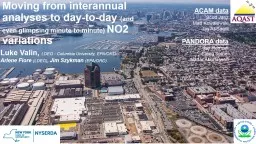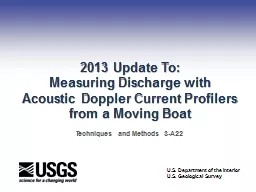PPT-Moving from
Author : pamella-moone | Published Date : 2017-04-28
interannual analyses to daytoday and even glimpsing minutetominute NO2 variations Luke Valin LDEO Columbia University EPAORD Arlene Fiore LDEO Jim Szykman
Presentation Embed Code
Download Presentation
Download Presentation The PPT/PDF document "Moving from" is the property of its rightful owner. Permission is granted to download and print the materials on this website for personal, non-commercial use only, and to display it on your personal computer provided you do not modify the materials and that you retain all copyright notices contained in the materials. By downloading content from our website, you accept the terms of this agreement.
Moving from: Transcript
Download Rules Of Document
"Moving from"The content belongs to its owner. You may download and print it for personal use, without modification, and keep all copyright notices. By downloading, you agree to these terms.
Related Documents













